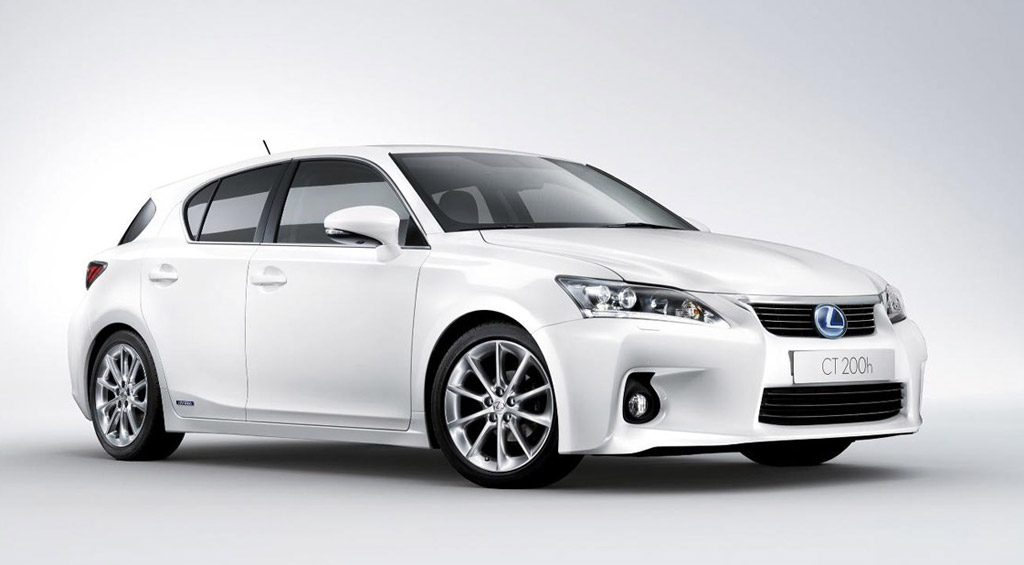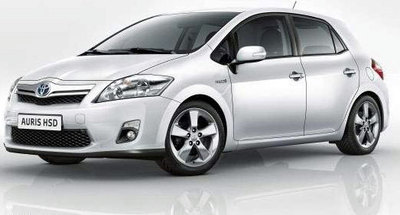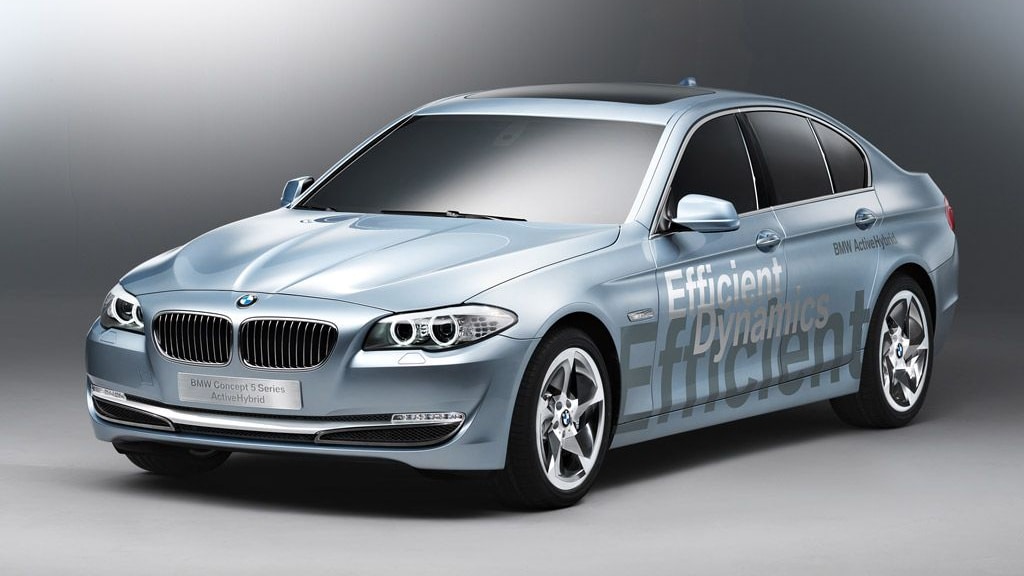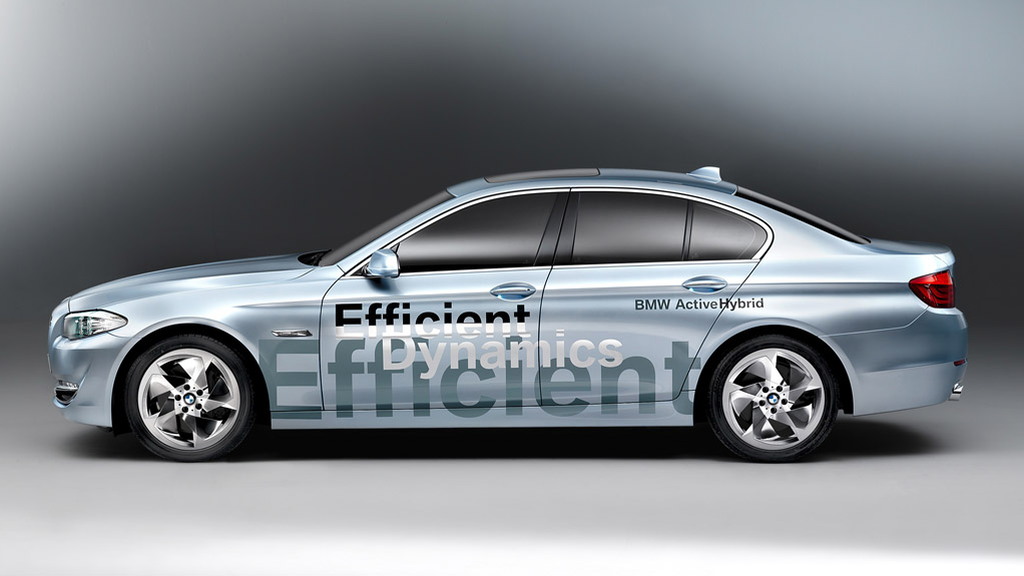No, sadly, we're not at the 2010 Geneva Motor Show, underway this week in Switzerland. But we've been keeping close tabs on the introductions via our colleagues throughout the High Gear Media network.
Here's our list of the green cars shown at Geneva that are headed for production. Most of them (except where noted) are headed for the U.S. market. We'll follow up with a similar roundup of the greenest concept cars from Geneva.

2011 Audi A8
2012 Audi A8 Hybrid
While its various e-tron electric concepts got more attention at Geneva, Audi's first production hybrid vehicle also debuted. The 2012 Audi A8 Hybrid--a full-size aluminum-framed luxury sedan, remember--draws power from a mere 2.0-liter gasoline engine.
That 211-horsepower direct-injected 2.0-liter engine, however, is paired with a 34-kilowatt (45-hp) electric motor to deliver a combined 245 horsepower and 354 foot-pounds of torque. Audi says performance is equivalent to the standard V-6 model of the A8.
Fuel consumption? On the European test cycle, it's quoted as 38 miles per gallon, though the U.S. equivalent would likely be lower. And Audi says the A8 Hybrid can run solely on electric power up to 40 miles per hour, and for more than 1 mile.
Its closest equivalent is the 2010 Lexus LS 600h hybrid, though that full-size luxury car uses a V-8 engine to deliver what it claims is V-12 performance. But the strategy used for Audi A8 Hybrid will offer far better fuel efficiency.
Audi is also likely to get a hybrid version of its massive Q7 crossover SUV, once that vehicle is redesigned as its Volkswagen Touareg and Porsche Cayenne brethren were. But the system used in the A8 Hybrid will also likely migrate down the Audi range; A6 next, perhaps?
OK, we're cheating a little by calling this a production car. But if you remove the fancy paint and graphics, the BMW Concept 5-Series ActiveHybrid is a lightly disguised version of the 2011 BMW ActiveHybrid 5, the company's third hybrid vehicle.
It uses an evolution of the mild-hybrid system jointly developed with Mercedes-Benz and previously fitted to its 2010 ActiveHybrid 7 full-size sedan. Based on a small lithium-ion battery pack, the earlier version merely supplemented engine power with electric.
The new version to be fitted to the 5-Series hybrid will allow some electric-only running in low-speed urban traffic, taking it out of the mild-hybrid classification. In most situations, however, it simply adds torque to assist the gasoline engine and reduce the fuel it uses.
Unlike the 440-hp twin-turbo V-8 used in the hybrid 7-Series, the ActiveHybrid 5 will use BMW's classic straight-six, in twin-turbo form (though capacity and power are not specified). BMW quotes fuel efficiency more than 10 percent higher than the standard six.
Its electric motor is more powerful than the previous one, rising from 15 kilowatts (20 hp) to 40 kilowatts (54 hp). As before, it is mounted between the engine and BMW's eight-speed automatic transmission. An unspecified battery pack is located near the rear axle.

2011 Lexus CT 200h
UPDATE (March 3): Whoops, we were wrong, below. Very much to our surprise, Lexus announced the 2011 Lexus CT 200h will make its U.S. debut at the 2010 New York Auto Show. Sorry 'bout that ...
(original story) This one we won't see in the U.S., since we've already been graced with the luxury make's first dedicated hybrid, the 2010 Lexus HS 250h. The HS is a sedan, which U.S. luxury buyers prefer over the almost non-existent category of luxury hatchbacks in the States.
The CT is a luxury five-door dedicated hybrid compact hatchback, and it's being launched in Europe and Asia only. Its competition includes the Audi A3 and the BMW 1-Series, which is sold largely in three- and five-door hatchback styles in Europe.
Lexus says the 2011 CT 200h is built on a new platform, using MacPherson struts up front and a dedicated double-wishbone and trailing-arm rear suspension design. The drivetrain uses the same 1.8-liter four as in the 2010 Toyota Prius, unlike the more powerful 2.5-liter engine in the HS 250h sedan.
The CT's Hybrid Synergy Drive system will offer the usual ability to run up to 1.2 miles on electric power only, under light acceleration, at speeds up to 28 mph. Lexus has promised "new levels of refinement, sophistication, and attention to detail" for the 2011 CT 200h.
While the first hybrid model of Porsche's entirely redesigned crossover SUV shares a basic architecture with the 2012 Volkswagen Touareg Hybrid, it is far from the top-of-the-line model as the VW hybrid is. For Porsche, that honor goes to twin-turbo V-8 versions.
The 2011 Cayenne S Hybrid model sits just above the base Cayenne, which has a 3.6-liter V-6. The hybrid gets more power (333 hp) out of a smaller 3.0-liter V-6, courtesy of supercharging.
That engine is paired with a 34-kilowatt (47-hp) electric motor that sits between the engine and Porsche's eight-speed automatic. The two power sources generate 427 foot-pounds of torque at a low 1,000 rpm, which should make stoplight drag races fun indeed.
Porsche says its Cayenne S Hybrid accelerates on battery power alone up to 37 mph, though surely not under full throttle. As usual, its electric motor adds torque to the engine's output, with the blend of the two power sources optimized for lowest fuel consumption.
Like the VW, the Porsche hybrid switches off its engine--calling it "sailing"--at speeds up to 97 mph under light loads or when inertia is sufficient to propel the car on downhill roads or during deceleration. Most hybrids use electric power only at low road speeds.
The Cayenne Hybrid is quoted at 28 miles per gallon on the European cycle, though U.S. mileage is likely to be lower. Fuel efficiency is helped by weight savings of almost 400 pounds over the previous Cayenne model.

Toyota Auris Hybrid
While the Toyota Auris is far from a new car--it replaced the previous model of Toyota Corolla hatchback in Europe back in 2007--the new Auris Hybrid model is significant because it's just gone into production in the U.K.
Sold in Europe and Asia, the Auris hatchback is built on the same compact platform as the 2010 Toyota Corolla. It's Toyota's third-best-selling car in Europe. You can think of it as similar to the now-discontinued 2010 Toyota Matrix five-door in the U.S. [explanation]
Production of the 2011 Toyota Auris Hybrid in Burnaston, England, is another step in Toyota's drive to offer its Hybrid Synergy Drive system on every model it builds, and to localize production. It now builds hybrids in Japan, the U.S., Canada, the U.K., and China.
The company says the 2011 Auris Hybrid will use about 20 percent less fuel than the standard version, and emit 17 percent less carbon dioxide. Given U.S. preferences for sedans over hatchbacks, though, we're not likely to see the compact Auris Hybrid here in the States.

2011 Volkswagen Touareg
2012 Volkswagen Touareg Hybrid
Details on the hybrid version of VW's all-new Touareg crossover SUV were released last week, so we'll just recap those here.
The top-of-the-range hybrid model will use a 328-horsepower, 3.0-liter supercharged direct-injected V-6 engine mated to a 34-kilowatt (46-horsepower) electric motor mounted between the engine and the transmission.
The combined peak power of the engine and motor adds up to 374 horsepower, making it capable of towing up to 7,500 pounds, VW says. The 2012 Touareg Hybrid will do 0 to 62 mph in 6.5 seconds, and it tops out at a maximum speed of 144 miles per hour.
It can run in all-electric mode at speeds as high as 30 miles per hour. And the hybrid system disengages the engine from the transmission both in electric mode and when the driver lets up on the accelerator at speeds up to 100 mph, reducing energy lost to drag.
Our editor Marty Padgett drove a prototype Touareg Hybrid last October.

vw touareg hybrid v6 tsi concept 2009 006
















